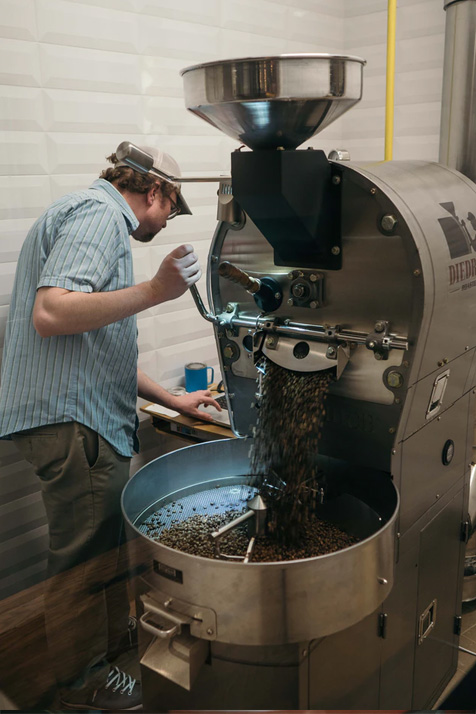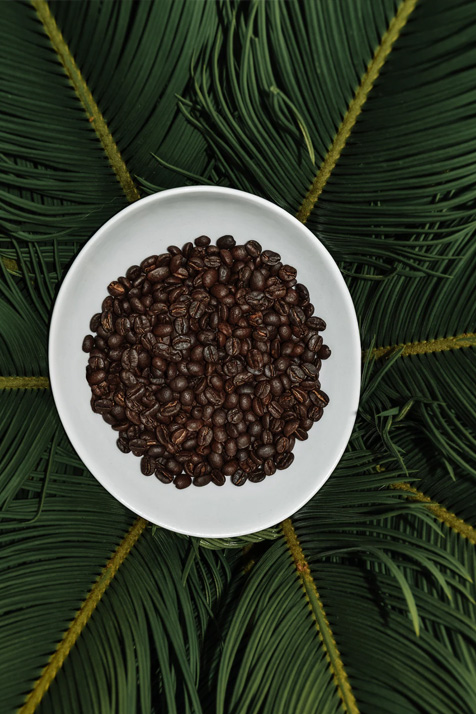Should I prefer dark or light roasted coffee?

Roasting is responsible for a large percentage of the taste of coffee.
As we know, the taste of coffee depends on a number of factors, each of which has, more or less, its own share in the final result. From the variety of coffee, whether it is single-origin or blended, the country of origin, the altitude and the processing of the grain, everything plays its own role in the taste we get from our cup. One of the most important factors for the taste and aroma of coffee, of course, is roasting!
Coffee beans, when extracted from the coffee fruit, retain a significant portion of their moisture. The so-called "green" coffee is roasted, that is, heated to high temperatures for a short time, in order to lose moisture, but also to release the aromas for which we love it. Depending on how roasted the coffee beans are, we can distinguish roasting in light, medium or dark.
 Which coffees are supposed to be roasted dark and which light?
Which coffees are supposed to be roasted dark and which light?
Until recently, the history of coffee gave a clear lead to dark roasting, especially when it comes to espresso. The coffee of earlier times was poorer in quality than it is today, and due to the long time it took to travel from the producing countries to the consuming countries, it was significantly more "stale". With the dark, intense roast, the aromas of roasting tend to dominate over the organoleptic elements of coffee. In this way, both the low quality of the coffee and its lack of freshness could be easily "masked".
Still, dark roasting can give flavor stability to espresso blends. The aromas and character of each blend are easier to control, in the hands of an experienced roaster, when roasting is dark and intense, than when it is light. In this way, a blend can have a stable taste, despite the small fluctuations in the crops, which can affect the individual taste of each variety.
Thus, coffees in which roasters wish to emphasize their organoleptic characteristics, such as some single-origin coffees or some specialty options, are usually roasted lighter. In contrast, blends intended for blending tend to roast more intensely, as this character helps to blend.
It is important to note that the degree of roasting alone is not indicative of the quality of the coffee! The fact that most specialty coffees have light roasting does not make any lightly roasted coffee specialty! Similarly, the fact that dark roasting sometimes "masks" lower quality coffee does not mean that any dark coffee is inferior in quality.
 Μedium Roast: Popular and Classic
Μedium Roast: Popular and Classic
If light roasting is now the fetish of the roasters of the Third Wave Coffee with the sophisticated extracts and single-variety coffees and dark roasting an obsession of the fans of traditional Italian espresso, medium roasting is the best and most popular option, combining two "schools".
With medium roasting, the organoleptic elements remain largely present and recognizable, while the taste profile is endowed with the aromas of roasting, which they offer to the coffee character. Coffee is suitable for blending but also for disposal as a single variety, while it has very good results in all extractions.
Most importantly, however, the character of coffee with medium roasting is closer to the tastes of the average consumer, as there are no extreme fluctuations, for example in terms of acidity or bitterness. This is why most commercial blends are usually available in medium roast.
Should we prefare light or dark roasting?
There is no answer to this, as everything depends on everyone's personal taste. If one loves lively acidity, fruity and floral aromas and is not interested in strong-bodied coffees, then it is better to turn to coffees with light roasting. Anyone who, on the other hand, appreciates the notes of tobacco, wood, earth and spices in their espresso and is looking for a strong body in their cup, it is better to prefer hard-roasted blends more intensely.
Also, lightly roasted coffees give excellent results in filter extraction (especially if dripper or pour over is used), while as espresso they can be very good, depending of course on our tastes. In contrast, dark crabs work very well in espresso extracts, but in other preparations the results are a bit poor.
What roasting deegree has more caffeine?
The more intense and bitter the taste of the coffee bean, the more it is roasted, it is responsible for a very widespread misunderstanding. Although dark roasted coffee is definitely more "heavy" in taste, caffeine content does not differ significantly from a corresponding brown roasted coffee - in fact, as the roasting time increases, the caffeine content decreases slightly.
Roasting is not a quality indicator for our coffee, but another factor that differentiates the taste of our favorite drink. Light, medium or dark?roasted, it is important to always enjoy the coffee we deserve!










